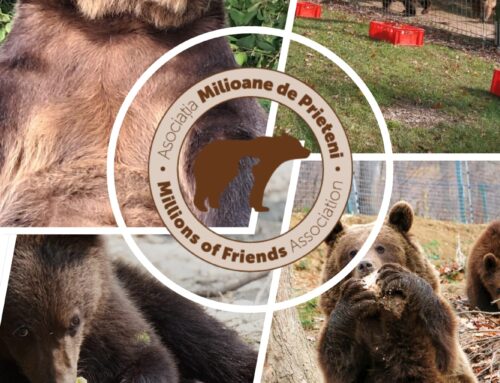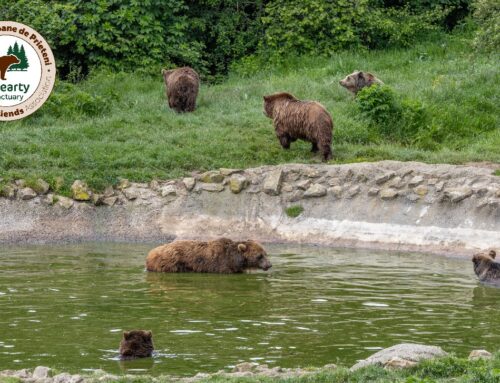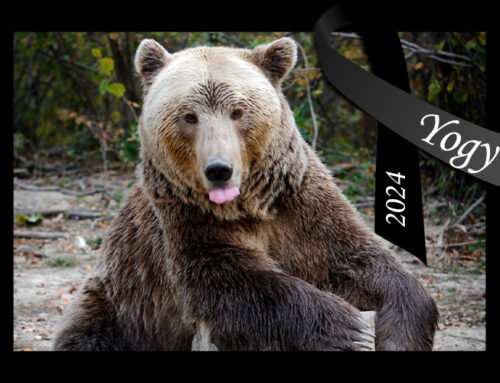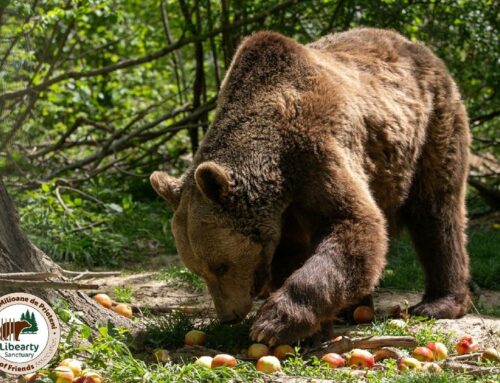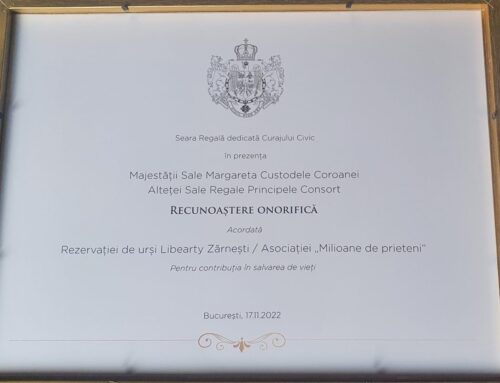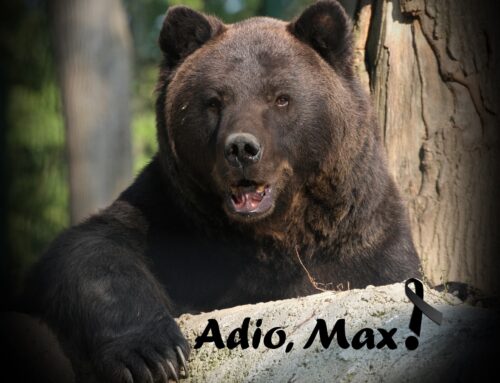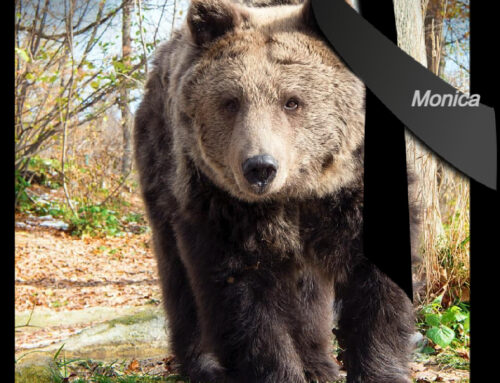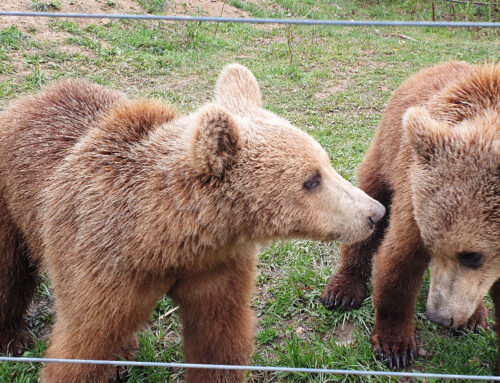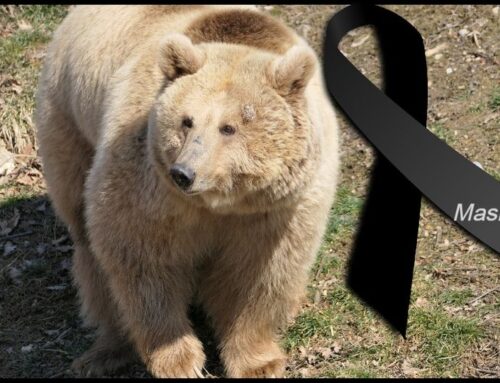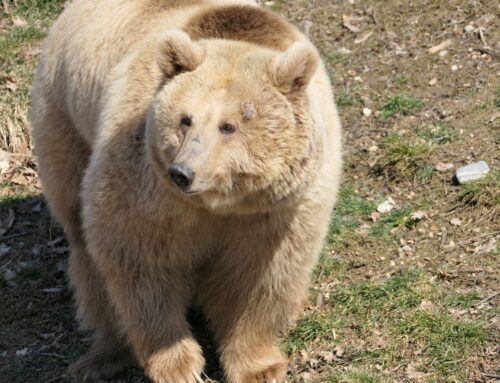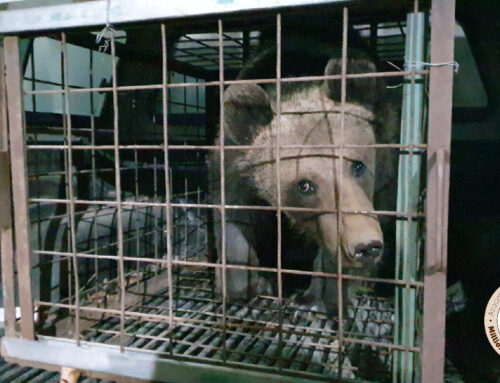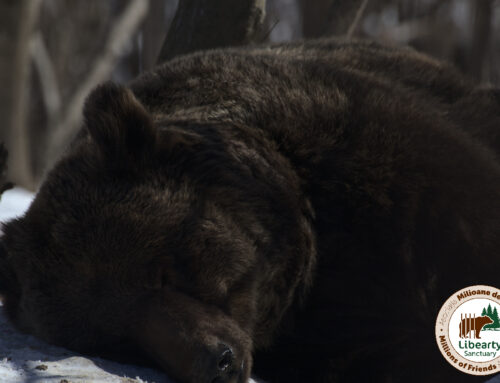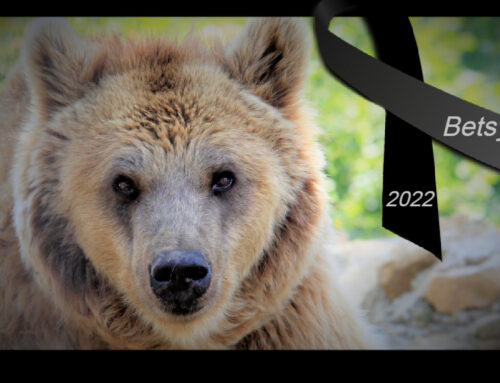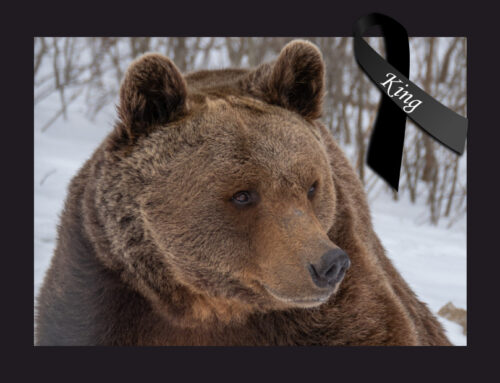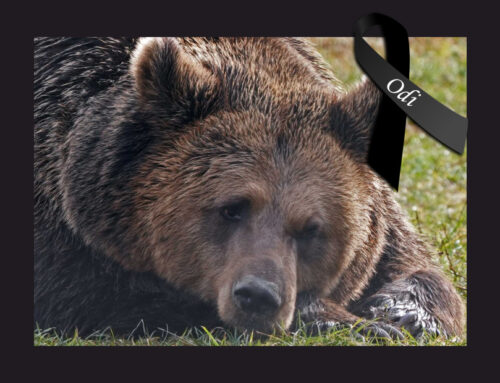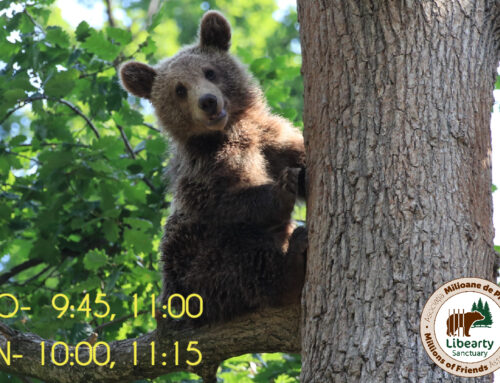

At –10 to –20 degrees Celsius, the sanctuary’s pools can be classified as ice rinks. Betsy, the old lady from the US, was photographed while walking slowly on ice in Training Area 2. This time it’s the ice that formed on the natural lake on the outskirts of the first enclosure, where Cherry and Jimmy were photographed as they challenged nature: How thick does the ice layer need to be to support 700 kilos?
The calculation is simple: ice is like a pane of glass that supports a pressure of 42 kilos per square centimeter. In theory, a layer of ice thicker than 1 centimeter could support a medium-size dog, or a 10- to 15-year-old kid. This assumes a base area of 10 square centimeters and a pressure of 4 kilograms per square centimeter.
In reality, fishermen rush onto the ice when a lake has a layer that’s 5 centimeters thick. If a single bear could skate on a layer of only 10 centimeters, Cherry and Jimmy would need 20 centimeters of ice under their paws—a normal thickness on the surface of a mountain lake. This winter, temperatures below –30 degrees Celsius were recorded in the sanctuary, and the colder it is, the thicker the layer of ice should be. So, how many bears (about 350 kilos) does it take to break the ice?



